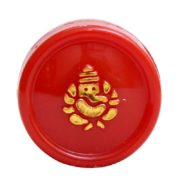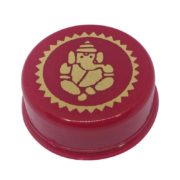How to Get Automated Customer Feedback Collection in Catering Business
Automating customer feedback collection in the catering business can streamline the process of gathering valuable insights from clients and guests. This helps in assessing service quality, identifying areas for Click Here improvement, and enhancing client satisfaction. Here’s a step-by-step guide on how to implement automated customer feedback collection effectively:
1. Define Your Objectives
- Identify Goals: Determine what you want to achieve with customer feedback. This could include evaluating overall satisfaction, assessing specific aspects of your service (e.g., food quality, service efficiency), or identifying areas for improvement.
- Determine Key Metrics: Decide on the key metrics you want to measure, such as Net Promoter Score (NPS), satisfaction ratings, or specific feedback on menu items and service.
2. Choose Feedback Collection Tools
- Survey Platforms: Select a survey platform that allows you to create and distribute feedback surveys automatically. Look for features like customizable templates, automated email triggers, and data analytics.
- Examples: Platforms such as SurveyMonkey, Typeform, Google Forms, or Qualtrics offer robust tools for creating and managing feedback surveys.
3. Design Your Feedback Surveys
- Create Relevant Questions: Design questions that align with your objectives. Use a mix of quantitative (e.g., rating scales) and qualitative (e.g., open-ended questions) to gather comprehensive feedback.
- Keep It Short: Ensure the survey is concise to encourage higher response rates. Focus on key areas of interest without overwhelming respondents with too many questions.
4. Automate Survey Distribution
- Set Triggers: Set up automated triggers to send surveys after specific events, such as following an event or completion of a catering service. This ensures timely feedback collection while the experience is still fresh in the clients’ minds.
- Examples: Use tools like Mailchimp or ActiveCampaign to set up automated email campaigns that include your feedback survey.
5. Integrate with CRM Systems
- Sync with CRM: Integrate your feedback collection tool with your Customer Relationship Management (CRM) system to automatically send surveys to clients based on their interactions and event history.
- Examples: Integration options are available with CRM tools like HubSpot, Salesforce, or Zoho CRM.
6. Implement Feedback Collection Channels
- Email Surveys: Send automated survey links via email after events. Include a personalized thank-you message and a link to the survey.
- SMS Surveys: For immediate feedback, consider sending surveys via SMS. This can be effective for quick responses and higher engagement.
- Website Integration: Embed feedback forms or pop-ups on your website to collect feedback from visitors and clients.
7. Monitor and Analyze Feedback
- Real-Time Analytics: Use the analytics tools provided by your feedback platform to monitor responses in real-time. Look for trends, common themes, and areas needing attention.
- Reports: Generate and review detailed reports to analyze overall satisfaction and identify specific areas for improvement.
8. Act on Feedback
- Review Insights: Regularly review feedback and identify actionable insights. Focus on recurring issues or suggestions that could lead to improvements in your service.
- Implement Changes: Make necessary changes based on feedback to enhance your service quality and client satisfaction.
- Communicate: Inform clients of any changes or improvements made as a result of their feedback. This shows that you value their input and are committed to continuous improvement.
9. Ensure Data Security and Privacy
- Compliance: Ensure that the feedback collection process complies with data protection regulations, such as GDPR or CCPA, depending on your location.
- Secure Storage: Store feedback data securely and restrict access to authorized personnel only.
10. Continually Improve the Process
- Review and Refine: Periodically review your feedback collection process and make improvements based on performance and changing business needs.
- Update Surveys: Update survey questions and formats as needed to reflect changes in your services or to address new areas of interest.
Examples of Automated Feedback Collection in Action:
- Post-Event Surveys: Automatically send a survey to clients within 24 hours of an event, asking them to rate their overall experience and provide specific feedback.
- Recurring Client Feedback: Set up periodic surveys for regular clients to gather ongoing feedback about their experiences and satisfaction levels.
By effectively implementing automated customer feedback collection, your catering business can gain valuable insights, improve service quality, and strengthen client relationships




